
still doing its job after all these years
[caption id="TheGreatWallofChester_Feature" align="aligncenter" width="1024"]
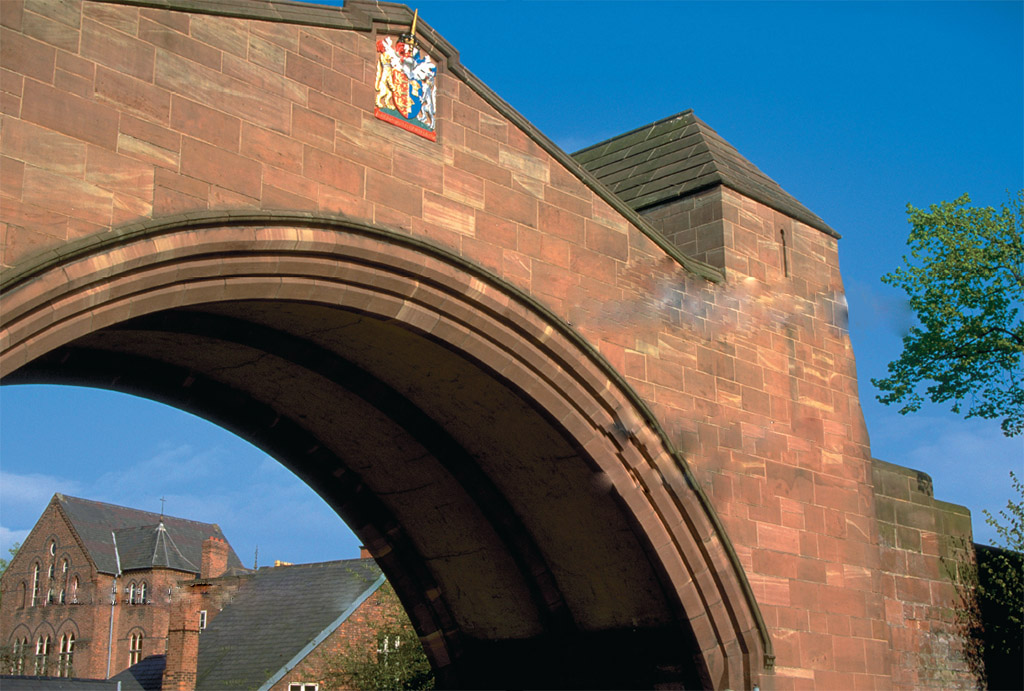
David G.Houser/CORBIS
[caption id="TheGreatWallofChester_img1" align="aligncenter" width="1024"]

LIBRARY OF CONGRESS
[caption id="TheGreatWallofChester_img2" align="aligncenter" width="1024"]
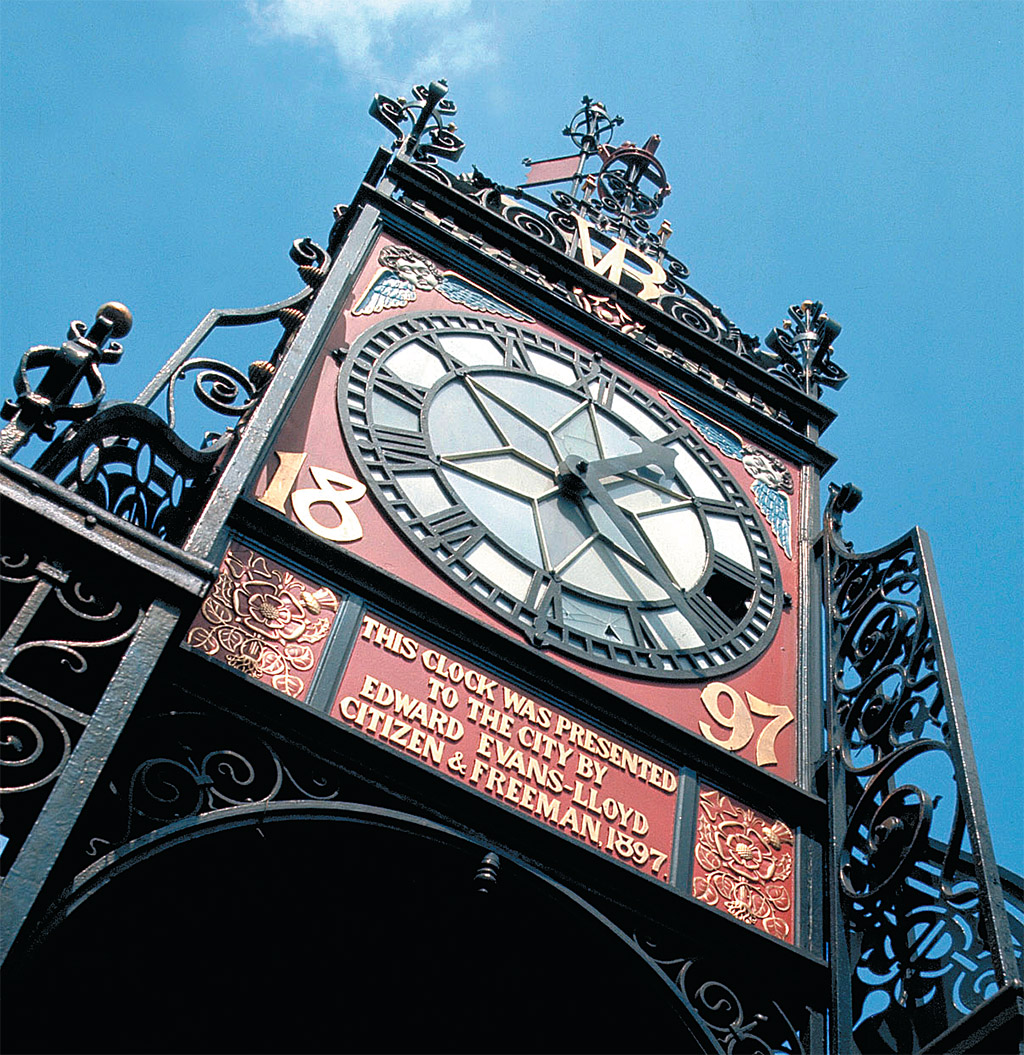
WWW.BRITAINONVIEW.COM
It’s all a matter of scale, I suppose. The previous day I’d been in York—England’s other walled city—an undeniably beautiful town with an enviable portfolio of architectural treasures. But they didn’t all hang together as well as those now laid out before me in Chester. York’s Minster and medieval streets share the city center with nondescript shopping facades and boxy offices. Chester, in contrast, allows itself only a handful of architectural faux pas.
In fairness to York, I was not quite comparing like with like.
Although both are classified as cities (an appellation that is bestowed far more stringently in the UK than the United States), they are very different. York is a big, sprawling place, home to nearly 200,000 people. Chester, population 118,000, retains the atmosphere of a medium-sized town.
Chester enjoys another crucial advantage: a complete ring of walls that wraps itself around the city center like a protective cloak. The walls have been giving “hands off” signals for 2,000 years. Originally they guarded Deva, a key stronghold founded in AD 79 by the Romans as a base for their elite legionary troops. In medieval times, the walls kept the Welsh, just across the border, at bay. Today they shout a warning loud and clear—“Keep out!”—to any property developer or planner who might contemplate picking apart the city’s incredibly rich and complex architectural tapestry.
Compact, self-contained Chester is made for walking. Although you can take an open-top bus tour or a river cruise, I would heartily recommend that you begin your visit, as I did, on foot. But which walk to choose? You can take a guided walk as part of a group or go it alone, following a choice of themed trails through the maze of streets and covered passageways. I chose the most obvious option. I walked the top of the walls, the most complete circuit of Roman and medieval defensive town walls in Britain.
“Starting at any point (on the walls), an hour’s easy stroll will bring you back to your station. I have quite lost my heart to this charming creation.” Those were the thoughts of novelist Henry James in 1872. I wouldn’t argue with his description, though I would challenge his estimate of the time it takes. The circuit is only about two miles in length. To do Chester full justice, however, you shouldn’t be walking at much more than one mile per hour. Every point of interest (and there are many!) is marked with an explanatory display board that delves into everything from Roman engineering to the canal and railway pioneers of the industrial age.
[caption id="TheGreatWallofChester_img3" align="aligncenter" width="663"]

COURTESY OF DANA HUNTLEY
I mounted the walls at a timepiece that is, apart from London’s Big Ben, the UK’s most photographed clock. The richly decorative Eastgate Clock, spanning Chester’s bustling main thoroughfare, was erected in 1897 in honor of Queen Victoria’s Diamond Jubilee. The great thing about this particular walk is that it reveals so many contrasting sights, secret corners, nooks and crannies. Within a few steps of the glittering clock, shops and jostling shoppers, I was looking out across a very different part of Chester—the tranquil, leafy spaces of the Cathedral Green.
[caption id="TheGreatWallofChester_img4" align="aligncenter" width="1024"]

FINE ART PHOTOGRAPHIC LIBRARY, LONDON/ART RESOURCE
The constant temptation to examine some of the many treasures close to the wall makes Henry James’ description of a one hour dash on the walls seem optimistic. Peer inside the red-stoned cathedral, founded in the 10th century, and you will see soaring Gothic architecture, superb stained glass and some of Britain’s finest examples of medieval woodcarving.
Back on the walls, the first corner tower is named after King Charles I, who watched from this spot during the Civil War in 1645 as his troops were defeated at nearby Rowton Moor. At opposite sides of the walls you’ll see engineering works spanning almost 2,000 years. To your left, Roman turf ramparts formed the base for Chester’s original wooden walls, and to the right lies the Shropshire Union Canal created in the late 18th century.
[caption id="TheGreatWallofChester_img5" align="aligncenter" width="865"]
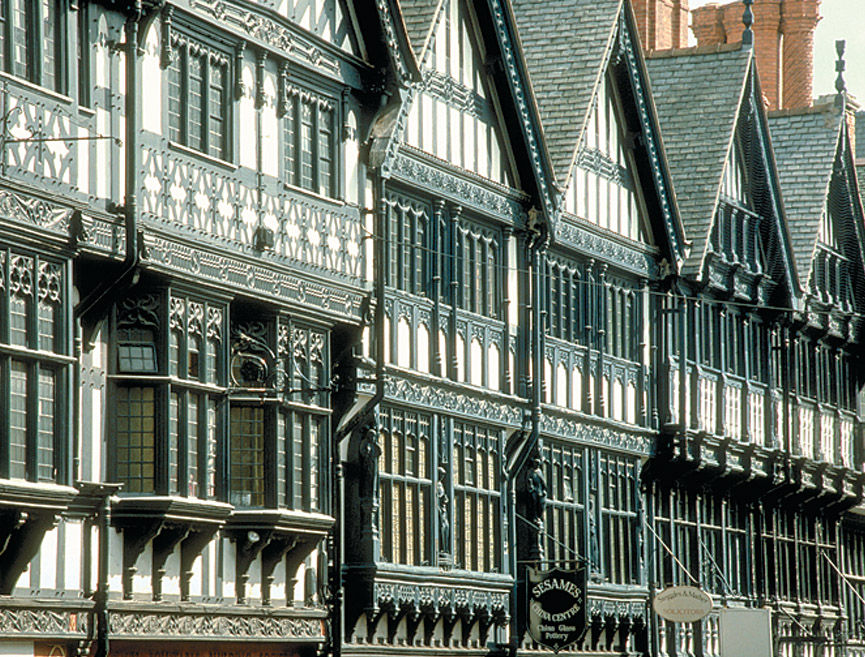
WWW.BRITAINONVIEW.COM
[caption id="TheGreatWallofChester_img6" align="aligncenter" width="536"]
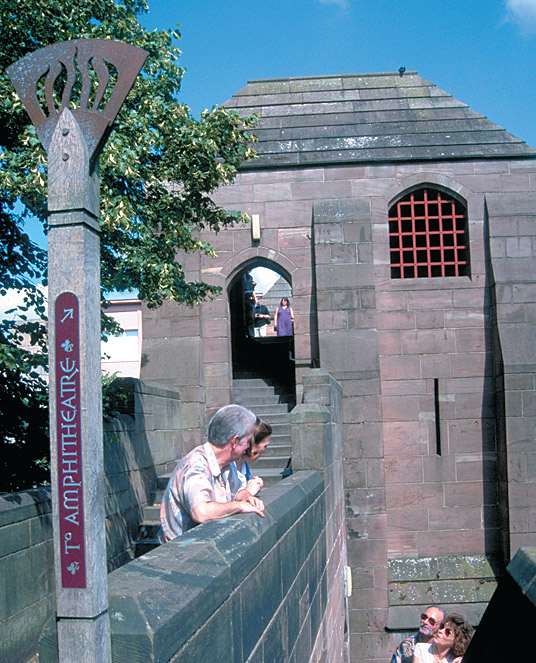
WWW.BRITAINONVIEW.COM
Chester is made for walking.It boasts the most complete circuit of Roman and medieval defensive town walls in Britain
The Romans subsequently replaced the timber with stone. At Northgate’s street level you will see the best surviving stretch of Roman fortress wall in all of northern Europe. The well of architectural detail in Chester is bottomless, so you’ll have to be selective or you’ll drown in it. Do take the time to go across the road at Northgate to the Blue Coat School building, founded as a charity school in 1700 to house and educate poor boys. The statue above the entrance depicts a pupil in the school’s distinctive blue uniform, his hat displaying his individual school number.
[caption id="TheGreatWallofChester_img7" align="aligncenter" width="775"]

WWW.BRITAINONVIEW.COM
[caption id="TheGreatWallofChester_img8" align="aligncenter" width="1024"]
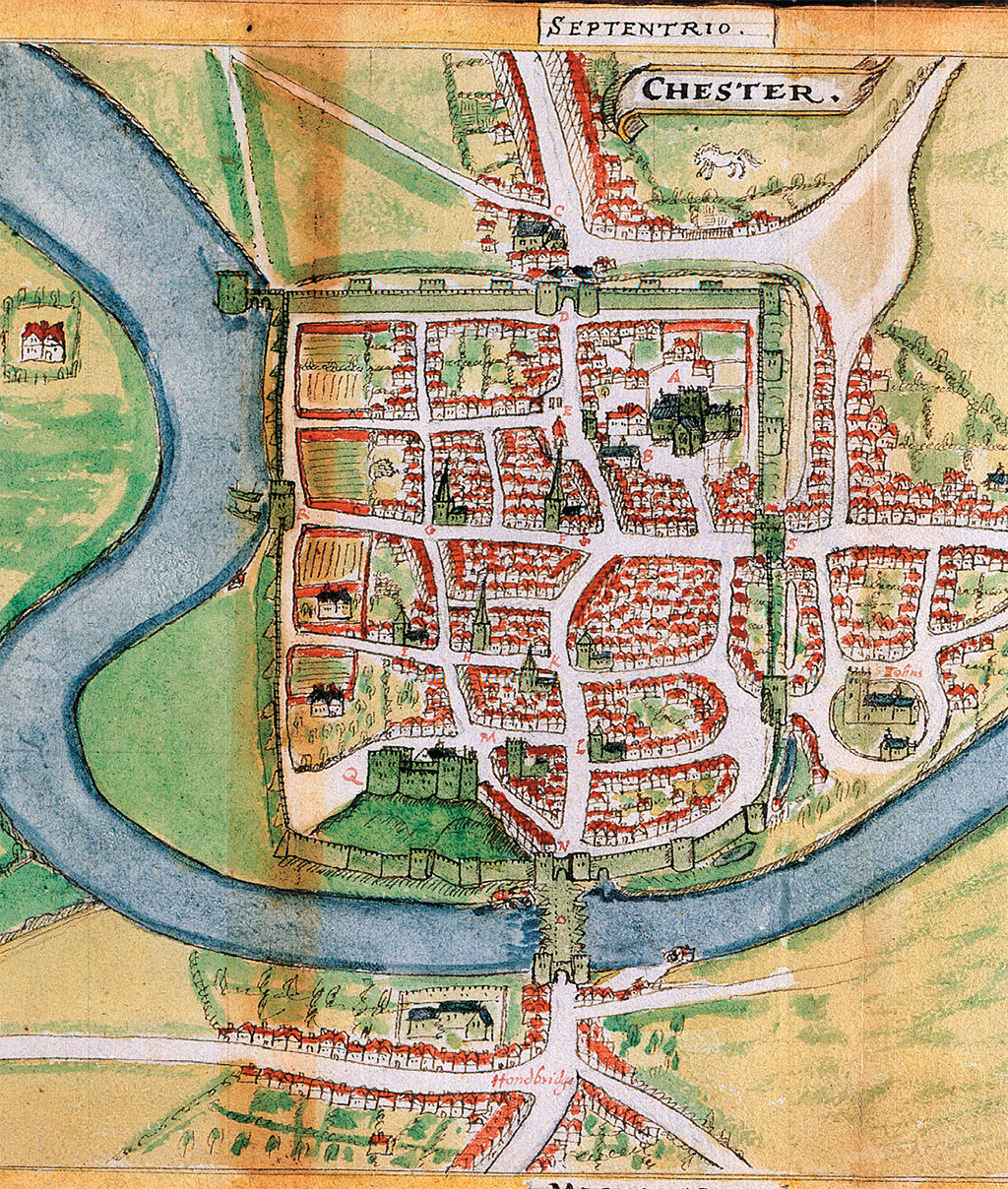
THE BODLEIAN LIBRARY, OXFORD/THE ART ARCHIVE
One of Chester’s many historic roles was that of a vital trading port. At one time, the River Dee, which has since changed course, lapped up against the walls. Bonewaldesthorne’s Tower and Water Tower, both now firmly landlocked, once guarded the port. Beyond Watergate, there are grandstand views of Chester’s famous racecourse (so good it made me wonder why anyone bothers to buy an admission ticket on race day). The Rodee Racecourse, Britain’s oldest, stands on the site of the Roman harbor; the quayside is visible to this day, just below the wall.
Next on your walk comes the only break in the wall. You have to cross busy Grosvenor Road, overlooked by Chester’s original 11th-century castle (now restored as courts, council of®ces and a museum), before rejoining the route to Shipgate and Bridgegate. When strolling along this peaceful section it’s easy to appreciate why by the 18th century the walls had become such a fashionable promenade.
[caption id="TheGreatWallofChester_img9" align="aligncenter" width="1024"]

PRIMEDIA ARCHIVE
After passing Bridgegate it’s impossible to resist the temptation to walk down the Recorder’s Steps to The Groves, an attractive riverside pleasure ground popular for its cafes, honey-scented lime trees, bandstand and boat trips. From here it’s a short hop back to the clock at Eastgate. You won’t want to rush, though, for the last section of wall packs a big historic punch.
Every architectural style comes together in a unique confection crowned by a delightful hodgepodge of gables and oversailing stories—as if someone has gone slightly mad with different sets of dollhouses and bundled them all together.
From the Watch Tower there are splendid views over the tiered Roman garden, with its collection of colonnades and other ancient masonry. Then comes another unexpected gem. Those who are familiar with the enduring British television series Coronation Street might be forgiven for thinking that it is set on Albion Street, a terrace of neat, red-bricked cottages built for workers in the Industrial Revolution. The street, just like the TV soap, even has its own pub, the Albion Inn, an award-winning traditional “English pub at its very best.”
At Newgate there’s another compulsory detour from the walls to see the Roman amphitheater, the largest ever found in the UK. Here 8,000 excited spectators once witnessed gladiatorial and military spectacles.
It’s a daunting thought that you will have merely scratched Chester’s surface when you return to your starting point at Eastgate. For a little light relief, this may be a good time to explore the shops. Even among the designer labels and chic jewelry stores, however, it’s impossible to ignore the city’s historic roots. Just take a look down Eastgate Street. Every architectural style under the sun comes together in a unique confection: black-and-white meets Georgian; red brick mixes with timber frame; Dickensian townscapes accommodate Tudor alleyways. All are crowned by a delightful hodgepodge of gables and oversailing stories.
Although it looks as if someone has gone slightly mad by bundling together different sets of dollhouses, the truth of the matter is a little more prosaic. We have the good sense of the Victorians to thank for the Chester that is before us today. Many of the highly convincing black-and-white Tudor buildings date from no later than the 19th and early 20th centuries, though they were modeled on originals that still survive from earlier centuries. You will need to look long and hard to distinguish between the truly historic and those that pay homage. There’s a Gordian knot of detail to unravel in the process: medieval carvings, coats of arms, leaded window frames, ancient doorways, arches, inscriptions and insignias.
As with the lofty wall walk, it’s easy to get to grips with Chester at street level. The street pattern still follows the straightforward Roman grid, and most of the interest focuses on just four thoroughfares—Eastgate, Watergate, Northgate and Bridge streets. Here you’ll find the “Rows,” another famous Chester feature.
The city has been ranked (along with Boston, Barcelona, Brussels and Milan) as one of the world’s five great shopping destinations, in no small measure because of the Rows, which are galleried first-floor walkways lined with specialty shops, trendy bistros and ancient inns. Street-level stone crypts or undercrofts, originally used for storage, have been converted into yet more shops and places to eat.
Chester knows how to look after itself. In this day and age of homogenized shopping malls and standardized cityscapes, the city is more than aware that, snug within its walls, there’s something unique. Where else can you see the remains of a Roman bathhouse in the cellar of a fast-food outlet?
JOURNEY NOTE
The best address in town is the Chester Grosvenor.This luxury hotel in the middle of the city boasts superbly appointed rooms, first-class service and award-winning cuisine.Its latest addition is the Grosvenor Spa.Rooms from £199.75 per night (double or single occupancy). The Chester Grosvenor, Eastgate, Chester CH1 1LT; Phone:01244 324024 E-mail: [email protected] Web: www.chestergrosvenor.com
Close by there’s Blossoms, a spacious, relaxing hotel with comfortable rooms (doubles from £120 per night). Blossoms Hotel, St.John Street, Chester CH1 1HL Phone:01244 323186 E-mail: [email protected] Web: www.macdonaldhotels.com For more information, contact the Chester Visitor Centre Phone:01244 492111 E-mail: [email protected] Web: www.chestertourism.com R.T.
[caption id="TheGreatWallofChester_img10" align="aligncenter" width="998"]

CHESTER GROSVENOR AND SPA





Comments